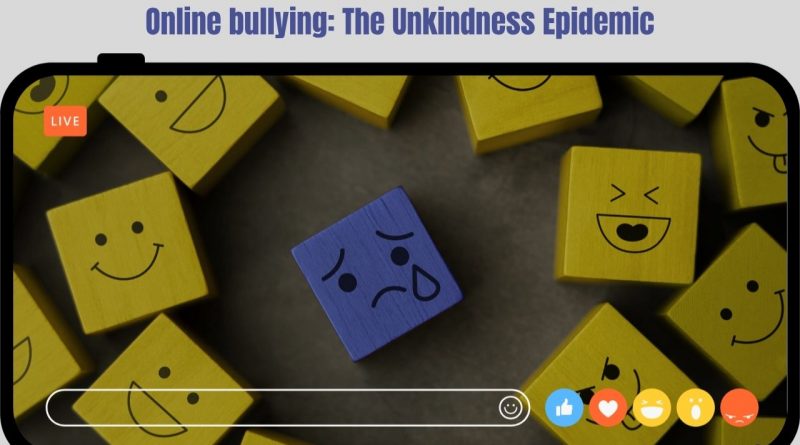Online Bullying Isn’t Always What You’d Think It Is: Panel
Team Health Collective
IRL vs URL: What would you choose? A panel discussion hosted by The Health Collective opened with this reflective question that Snapchat executive and parent Poonam Nikam often asks students, to evaluate the balance between their online and real-world interactions.
As a parent who works in Tech Poonam kicked off our interactive discussion with a short presentation on digital safety, bullying and kindness.
Why This Matters
- India has approximately 37.7 crore Gen Z users
That is ~377 million Gen Z’ers, according to estimates - Hundreds of millions of Gen Z are on their smartphones: They contributed to about 44% of smartphone sales in 2024
- An excessive use of social media is linked with — you guessed it — increased stress, anxiety and depression.
Adolescents engage in compulsive behaviours such as scrolling in the middle of the night, which negatively impacts their mental and physical health, and leads to significant sleep disruption.
(Taddi VV, Kohli RK, Puri P. Perception, use of social media, and its impact on the mental health of Indian adolescents: A qualitative study. World J Clin Pediatr. 2024 Sep 9;13(3):97501. doi: 10.5409/wjcp.v13.i3.97501. PMID: 39350908; PMCID: PMC11438920.)
- Also: Cases of cyberbullying have shot up, as Poonam shared (increasing by 31% in Mumbai between 2021 and 2022), with many people not aware what constitutes cyberbullying. (Article here)
Common issues include:
- Fake AI-generated photos
- Online abuse following photo uploads
- “Cancel culture” and public shaming
- Gamified bullying within online games (e.g. a Norway-based gamer asked a child for photos of his mother in exchange for free tokens… something the child later shared with the parent)
- India also apparently has amongst the highest global rates of catfishing, with 39% of users reportedly falling victim
Some eye-opening anecdotes were shared, including a student’s conversation with her best friend being overheard by the friend’s sibling, leading to blackmail of a senior citizen of some 80L INR!
With experts from the world of mental health on the panel, some of the core questions raised were:
1. Why is unkindness increasing online?
2. How can we bring kindness and empathy back into digital spaces?
3. What can children, parents, and schools do to intervene early?
We had a chance to hear about the internal world of a child that is bullying, with a clear call for more understanding and empathy, from psychotherapist and founder, The Engaging Circle, Meghna Mukherjee. As she shared:
- Bullying is often a projection of internal pain – the digital world has merely amplified this behaviour.
- Many children who bully feel unheard, humiliated, or inadequate.
- Society values toughness and authority over vulnerability and authenticity.
- Encourage reflective thinking in classrooms: this can help students articulate emotions and understand others’ feelings.
She also talked about the importance of co-regulating with children – for parents and children to learn together how to identify and name feelings, even creating “speed breakers” for emotional reflection. This could also work in the area of managing social media usage and screen time (for both!)
We also heard from Binu Thomas, the Head of Wellbeing at Woodstock, a residential school in Mussoorie. She stressed the need for emotional literacy, saying that students often overuse terms like “depressed” or “anxious” without understanding them. Some other critical points she made include:
- Recommending a proactive, age-based approach: first teach children from an early age what offline bullying is and then what online bullying is.
- Highlighting peer-to-peer support as more effective than adult intervention in schools.
- Organising Mental Health First Aid training for dorm parents and teachers to foster a cultural shift.
- Emphasising that adult kindness sets the tone for student behaviour.
Pia Desai, a Parent and Founder of the parenting group Parenting A-Z shared her perspective that we need to bridge digital safety with empathy, not by asking young people to unplug. As she highlighted:
- Adolescence (12-16 years) is clearly a complex phase with emotional, physical, and hormonal changes that makes self-awareness difficult.
- Adults struggle to model mental health behaviours because these concepts were rarely taught in earlier generations.
- Systems may be flawed, but individuals taking responsibility can initiate change.
Pia called for inter-generational empathy, saying it will help adults and children navigate mental health together, something that resonated with other speakers as well.
Some Strategies and Recommendations If You’re Being Bullied
- Speak up and inform a trusted adult or authority
- Explore legal remedies, as protections are increasingly effective
- Avoid isolation and lean on friends and peers for support
Building a Kinder Digital Culture:
- Digital Dignity Rule: If you wouldn’t say it in person, don’t type it online.
- Encourage empathy as a conscious daily act.
- Integrate reflective exercises in school routines, help children pause, identify, and express emotions.
- Shift from micromanagement to trust-based guidance — allow teens autonomy while setting clear boundaries.
- Foster “inspectors” or student ambassadors to monitor online kindness in schools.
- Use media literacy and case discussions to make students aware of online manipulation and fake content.
Do let us know if any of these resonate and what you’d want to put into practice!
Kindness must be taught, modelled, and practised.
Bullies and victims are often struggling emotionally; support systems must address both sides.
A whole-ecosystem approach having parents, schools, counsellors, and digital platforms is essential to create safer online environments.
It’s clear that this is not a problem that is going to go away on its own.
Challenges
The Health Collective asked Poonam Nikam to double click on some of the challenges: What is your biggest challenge as a parent when it comes to raising awareness on digital safety, and what constitutes bullying?
She says: Managing a 10-year-old boy, I’ve realised that parenting today is all about balance. We can’t be helicopter parents; we have to let a few things go, but we also can’t be hands-off. Constant communication is key.
Understanding the environment our kids are in, resonating with their situations, and helping them make sense of it all is far more effective than simply banning or limiting access. I think boundaries work best when kids are part of defining them — it gives them ownership and helps them internalise what’s right and wrong online. It does sound simple, but works.



When it comes to raising awareness about digital safety, I really believe we need to treat it with the same seriousness as physical safety. Just as we teach children to lock the door or not open it for strangers, we have to teach them how to protect themselves in the digital world. Unfortunately, that kind of awareness is still lacking, partly because we, as parents, are still learning what digital safety truly means, and partly because schools often aren’t fully equipped to address it. There’s definitely more that needs to be done in this space through education, collaboration, and open dialogue.
As for bullying, I think what’s changing is that this generation is growing up entirely in a digital world, and cyberbullying has multiplied manifold. Many parents, caregivers, and even kids don’t fully understand what constitutes cyberbullying – it’s not just harsh comments, but can take many forms like exclusion, impersonation, or sharing personal content.
A lot of people nod along as if they know, but they don’t always recognise the nuances or the harm it can cause. That’s why awareness and conversations around it are so critical not just to prevent it, but to help children understand empathy, respect, and responsibility in digital spaces.
With thanks to Ishika Bansal for this report.



